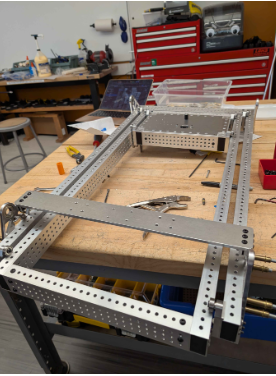 One of our off-season advanced projects is creating a cascade elevator. We previously made a continuous elevator for the 2023 Charged Up season, and we hope to expand our knowledge on creating robust elevators for the future.
One of our off-season advanced projects is creating a cascade elevator. We previously made a continuous elevator for the 2023 Charged Up season, and we hope to expand our knowledge on creating robust elevators for the future.
An elevator has been an important system used to achieve game tasks by many top teams in the past. An elevator is often used to manipulate game pieces to a raised position or to climb during the end game. Having an elevator allows for more scoring opportunities to gain an advantage during competition. Compared to a continuous elevator, a cascade elevator is faster due to the simultaneous movement of stages and has  a consistent carriage motion, while being simpler to rig.
a consistent carriage motion, while being simpler to rig.
Going into the project, we set a goal to create an angle-adjustable 2-stage cascade elevator that can extend 4 feet in ~1 second and be able to lift the robot 2 feet off the ground. To learn about creating an elevator for the build season, we aimed to make the elevator fully functional on one of our swerve drivetrains to understand the process from start to finish.

Due to our goal of creating an adjustable elevator, used a 7/8in diameter dead-axle tube mounted on an adjustable plate on the swerve drive base. The angle can then be fine-tuned with the carbon fiber tie rods that extend to the top of the elevator. This type of superstructure was something we wanted to test out in the offseason before trying it in build season, and overall we are quite happy about how it turned out and its adjustability.
Throughout the machining, assembly, and wiring process, we have taken note of many learnings and through the documentation we hope to make elevators a seamless experience in the future. Currently, the elevator assembly is done, and we are passing it on to the programmers for the final stretch of testing.

